HISTORY OF AGRICULTURE
How the agriculture in the wordl are born
The beginning of agriculture is in the Neolithic period, when the economy of human societies evolved from harvesting, hunting and fishing to agriculture and livestock. The first cultivated plants were wheat and barley. Its origins are lost in prehistory and its development was developed in several cultures that practice independently, such as those that emerged in the so-called Fertile Crescent (area of the Middle East from Mesopotamia to Ancient Egypt), the pre-Columbian cultures of Central America, the culture developed by the Chinese in East Asia, etc.
There is a transition, usually gradual, from the economy of hunting and gathering of agricultural products. The reasons for the development of agriculture are serious climatic changes towards more temperate temperatures; it may also be due to the shortage of hunting or gathering food, or the desertification of large regions. Despite its advantages, according to some anthropologists, agriculture meant a reduction of the variety in the diet, creating a change in the evolution of the human species towards more vulnerable and dependent individuals of an enclave than its predecessors.
Agriculture and the dedication of women to intensive motherhood3 allowed a higher population density than the hunting and gathering economy due to the availability of food for a greater number of individuals. With agriculture, sedentary societies and ownership of real estate, the breadth of the division of labor and the overcoming of a more complex enterprise with artisanal and commercial activities, agricultural settlements conflicts over the interpretation of land boundaries owned by the origin to the first legal and governmental systems. The new situation of women, now confined to a domestic space, the exclusion of the economy and social life, giving rise to patriarchy.
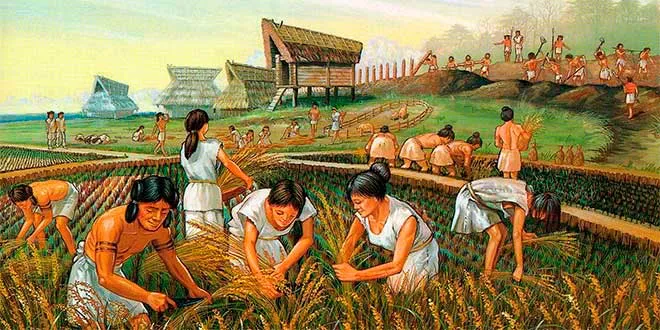 source
source
HOW EVOLUTION AGRICULTURE WORLDWIDE
The beginning of agriculture is in the Neolithic period, when the economy of human societies evolved from harvesting, hunting and fishing to agriculture and livestock.
The reasons for the development of agriculture could be due to climate changes towards more temperate temperatures; they could also be due to the scarcity of hunting or gathering food, or the desertification of large regions.
With agriculture, societies become sedentary and property ceases to be a right only on mobile objects to move also to real estate, the division of labor is broadened and a more complex society arises with specialized craft and commercial activities, agricultural settlements and conflicts over the interpretation of property boundaries give rise to the first legal and governmental systems.
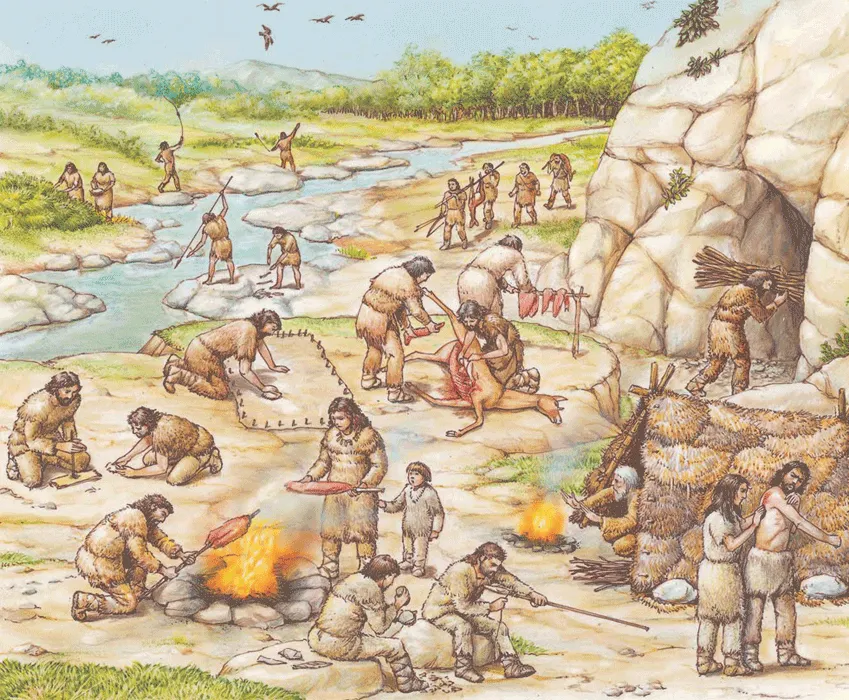
source
Agriculture in ancient Rome
In the early days of Rome, cereals, legumes and vegetables were mainly grown, but at the time of republican and imperial expansion agriculture included, in addition to wheat (bread was always the basis of food) the other two elements of the so-called triad or Mediterranean trilogy.
The peasant worked with his family, in a literary idealized model of simple life (basis of moral, family and public values, and participation in the res publica); but with the territorial expansion, the continuity of the war effort, which demanded a prolonged military service of the citizens, ruined the small exploitations for the benefit of the slave production mode. This system included most of the agricultural production, both the modest lots of land distributed to veteran soldiers and the large estates in the hands of the senatorial aristocracy. In the slow transition from slavery to feudalism, from the crisis of the third century, slaves were replaced by serfs, and the Empire was made, passing the rural villages to be self-sufficient centers, to the detriment of decadent cities.
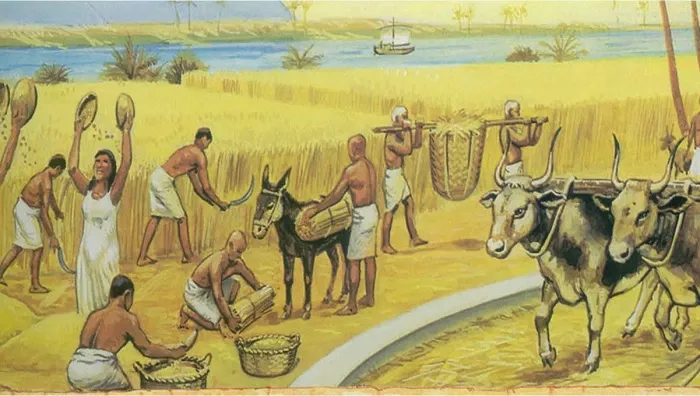 source
source
Middle Ages
Throughout the European Middle Ages, important technological innovations emerge that will bring some positive elements to the work of the peasants. The main innovations in medieval agriculture were due to the greater dynamism of the feudal mode of production, which meant for the serfs a greater incentive in the improvement of production than for the slaves. The Parties of Alfonso X of Castile define the peasants within the estates society as those who till the land and fazen in it those things for which men have to live and to maintain themselves. This active peasantry was the fundamental force of work in medieval society.
The introduction of the use of heavy plows (with wheels and mouldboard) allowed a deeper cultivation of the soils of northern Europe (it was incorporated throughout the 11th century in the regions north of the Alps, while the fragile soils of the Mediterranean area were still linked to the Roman plow). The hydraulic mills (later those of wind introduced from Persia) increased in an important way the productivity of the work, as well as the gradual improvement of the agricultural implements, like new types of tracks, sickles and scythes.
The change of the ox by the horse as draft animal was the result of two technological advances - the use of the horseshoe and the development of the collar - that allowed the horse to pull more loads more easily. This increased the efficiency of land transport, both for trade and for military campaigns, and added to the overall improvement of the road network, increased commercial opportunities for better communicated rural communities.
These changes caused a growth, as much in the variety as in the quantity of the harvests, that had important effects in the diet of the population. The field was the great protagonist in the European Full Age. The resources provided by agriculture and livestock were the basis of the economy and land was the center of social relations, being the distribution of their surpluses that allowed the urban revolution that was lived between the eleventh and thirteenth centuries, summit of the period called medieval optimum, benefited by a particularly mild climate. The average annual growth rate of the European population during the period 1000-1300 was
0.2%. Among the causes of the reduction in the mortality rate that allowed that growth, slight but sustained, it has been suggested the improvement in the food product of the incorporation of the eighth amino acid, thanks to the consumption of the lentil.
The agricultural expansion of arable land was made at the expense of reducing the area of the forest and the incorporation of marginal lands and although it contributed to the growth of food production, it inevitably led to the negative consequences of the law of diminishing returns , what was among the distant causes or preconditions of the crisis of the fourteenth century. Despite the progress, medieval agriculture always showed signs of precariousness due to the impossibility of making the productive investment of the surplus (extracted in the form of feudal rent by the nobility and the clergy) and its close dependence on natural conditions.
 source
source
Modern age
During the Ancien Regime the countries of the south and east of Europe prolonged the feudal economic system, especially in agriculture, being able to speak of an obvious refeudalization since the crisis of the XVII century, in which the predominant position of the lords against the peasants was reaffirmed , that continued being the immense majority of the population, but that they did not have possibility to initiate the accumulation of the necessary capital for the agrarian transformation. In contrast, in north-western Europe, especially in the Netherlands and England, social and political changes (bourgeois revolution) were accompanied in the field by an agricultural revolution prior to the Industrial Revolution of the eighteenth century, which intensified crops, increasing yields thanks to technical and productive improvements (crop rotation of four leaves of Waasland, implements of Jethro Tull) and the introduction of new crops.
 source
source
Contemporary age
The ideology of economic liberalism advocated the liberation of the land market and the imposition of private property on them, with different manifestations according to the countries (enclosures in England since the eighteenth century, in Spain suppression of mayorazgos and señoríos from the Cortes of Cádiz, disentailment of Mendizábal in 1836). The formation of unified national markets implied the unification of the weights and measures, and the liberalization of prices against the previous mercantilist protectionism, a task that enlightened despotism had initiated from supposed Physiocrats in the mid-eighteenth century. The suppression of the rate of wheat in Spain in 1765 was among the causes of the Esquilache mutiny, from which the slow processing of an Agrarian Law did not reach effective results (Jovellanos report, 1795). In the Austrian Empire there was the abolition of servitude (Joseph II, 1785), which in the Russian Empire did not arrive until 1861 (reform of Alexander II). In France, the Revolution of 1789 suppressed the feudal rights, providing a base of small proprietors but with sufficient capacity of capitalization, very implied with its earth, that characterized since then the vitality and special social and political force of the French field. In England, the predominance of the landlords and the gentry in the Parliament managed to maintain well into the nineteenth century the protectionism of the Corn Laws to avoid a decline in the price of wheat, to the detriment of the industrialists who sponsored the Manchester School. What has been produced is the drastic reduction of the agrarian active population in the face of ever greater labor productivity. Lack of expectations of work in the field for a growing population (demographic explosion), and the breaking of the traditional solidarity networks in rural parishes (Poor Laws, disappearance of the communal ones - in Spain with the disentailment of Madoz, 1855- ) led to an unstoppable rural exodus that fed the suburbs of industrial cities.
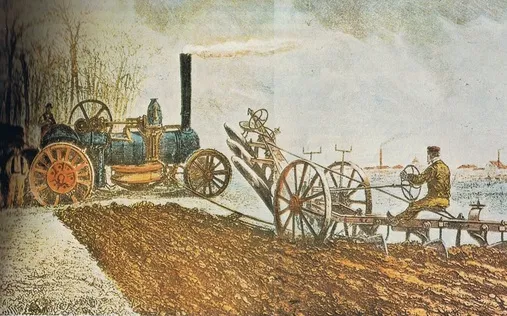 source
source
Present
Century XX, especially with the appearance of the tractor, the demanding tasks of sowing, harvesting and threshing can be done quickly and on a scale previously unimaginable. According to the International Academy of Engineering of the United States. The agrarian mechanization is one of the 20 major achievements of engineering of the twentieth century. At the beginning of the 20th century, in the United States a farmer was needed to feed 2 to 5 people, while today, thanks to technology, agrochemicals and current varieties, a farmer can feed 130 people. The cost of this productivity is a high energy consumption, generally fossil fuels
The diffusion of the radio and television (mass media), as well as of the computer science, are of great help, when facilitating meteorological reports, studies of market, etc.
In addition to food for humans and their animals, it is produced with more and more extensive use such as flowers, ornamental plants, wood, fertilizers, hides, leather, chemical products (ethanol, plastics, sugar, starch), fibers (cotton, hemp, flax), fuel (biodiesel, ethanol itself, which is now being obtained from corn), biopharmaceutical products, and both legal and illegal drugs (tobacco, marijuana, opium, cocaine). There are also plants created by genetic engineering that produce specialized substances (such as, for example, transgenic maize, which, like the production of ethanol, is modifying the economy of the crops of this plant and the life of the communities that make it still depend).
Genetic manipulation, better management of soil nutrients and improved control of seeds have greatly increased crops
per unit area, in exchange these seeds have become more sensitive to pests and diseases, which leads to a need of the latter greater by the farmer; Proof of this is the resurgence of old varieties, very resistant to diseases and pests, for their rusticity. At the same time, mechanization has reduced the demand for labor. Crops are generally smaller in the poorest countries, lacking the capital, technology and scientific knowledge needed.
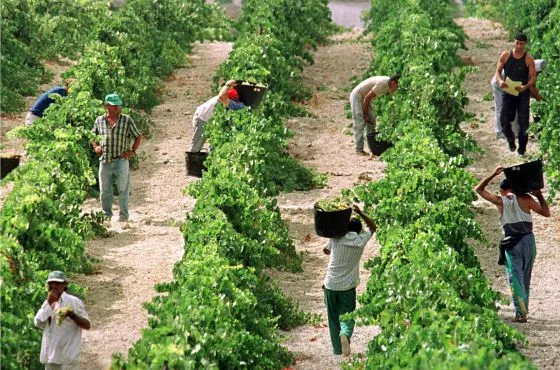 source
source








